When it comes to smartphones, a handset’s features can vary a lot depending on the apps you choose to download. Given this, I chose to focus more on the major built-in features of the Droid. (Once again, this review and the previous parts of it were written with the average consumer and his/her usability in mind as the priority.)
Phone Calls: I wonder why so many reviews treat the number-one phone feature like an after-thought? So I’m going to begin this section with call clarity: Both for inbound and outbound, calls come through nicely, with decent audio, very little to no static or blips, and I haven’t yet dropped a single call. Your coverage may vary, but the handset itself delivers nice clarity in regular use. (The speakerphone can get a little tinny on the other end of the call, though, so use the handset mic for chatting with Aunt Irma and her hearing aid.)
Web Browsing: This is nice. And pretty speedy. In fact, in my own experience, the Droid actually loads faster than the iPhone. But — and this is important — a lot depends on where you use it. If you don’t have great Verizon 3G coverage, don’t blame the phone if the browser’s not lightning fast. (On the go, it draws from your provider’s data network.) But if you’ve got great coverage, or if you’re somewhere with Wifi, it’s got very decent speed.
Navigating forward or back takes a little getting used to, since they aren’t immediately available onscreen. (You have to click “Menu” for these options.) Also, a lot of people made a stink about the lack of “pinching and zooming” to magnify or shrink the screen, but honestly, the double taps didn’t bother me at all. (This, coming from a hardcore fan of the iPhone, which originated the pinch/zoom.) It was only problematic once in a while, when my tapping accidentally launched a link.

Music/Media: The Droid doesn’t comes with earbuds, but it does have decent stereo speakers. Phone geeks know that there have been some glitches lately, but it doesn’t look like a problem with the physical speakers (which means it could be fixed in a future software update).
Surprise, surprise, (love it or hate it) there’s no iTunes on this, so users can purchase via the Amazon MP3 store. The Droid can play several different file formats, like WAV or Aiff, so MP3s aren’t a requirement, and it comes with a YouTube app already loaded. There’s also a separate a multimedia dock you can buy ($30), which is nice for sitting the phone up for viewing vids.
My hurdle with media has to do with syncing — or more accurately, media management. As a Mac/iPhone user, my regular handset “just works” with iTunes. There’s very little involved; I just hook it up and my playlists and media sync up nicely. For Droid (or any Android phones, for that matter), it’s a little more complicated, with some dragging and dropping required. There are also issues if you bought DRM-protected songs or vids via iTunes, which don’t really work with Android devices. So if you’re expecting a “set-it-and-forget-it” thing here, this isn't going to thrill you. (For more on media management in Droid/Android, John Walton did a whole post on it.)
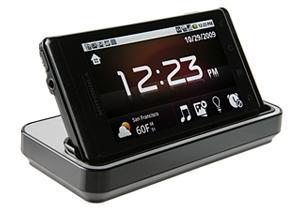
Camera: The Droid’s camera is not bad. It’s not great either. In fact, its 5MP camera produced worse pictures than my iPhone 3GS’ 3MP camera. Colors weren’t as vibrant, and there have been some issues with the on-again, off-again functionality of Droid’s autofocusing. (There’s reportedly a software glitch that’s causing it, so hopefully, Motorola is working out the bug.) Budding photographers will like all the manual controls, like adjusting flash settings and white balance, but people who just want decent snaps out of the box might be a little disappointed.
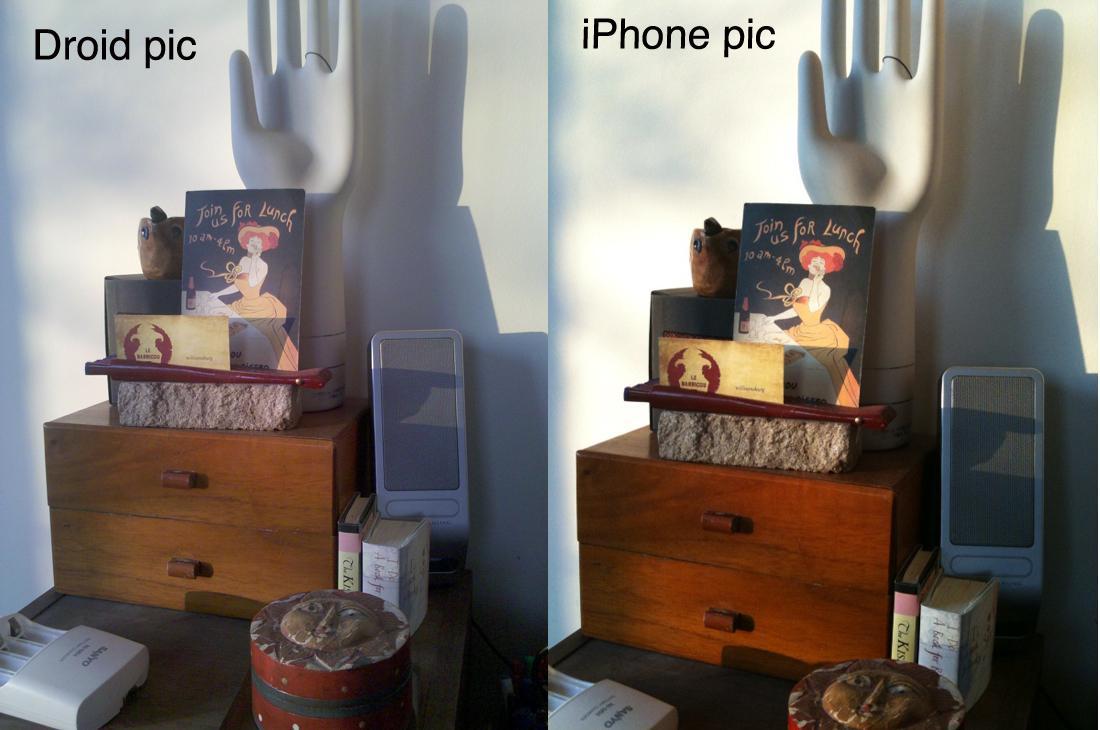
Messaging: First, auto-correct is your friend. And it works very nicely on the Droid. And hello! Cut and paste right out of the box for SMS, emails and other text-based input is sweet. (iPhone users only just recently got this much-desired feature.) Inputting numbers, however, could’ve been made easier. You have to click the ALT button on the keyboard, or the Symbols key on the virtual keyboard, to bring up numbers. This is a klunky and way-too-common approach. (My iPhone also suffers from it.) I really like the HTC Hero’s solution: You hit and hold a letter key for the corresponding digit. It makes messaging much, much easier.
Aside from that, my chief issue has to do with error correction. Shooting off a quick message using the onscreen keyboard suddenly becomes a chore when there’s a typo. To fix it, you have two choices:
Either way you slice it, this is a pain in the neck. I think the Droid could’ve taken a cue from the iPhone, and magnified the area (below). Or barring that, the designers could’ve included a front-facing D-pad, rollerball or trackpad for easier navigation. Yes, it would’ve marred the sleek aesthetic, and yes, it would’ve made life easier. (I suppose I shouldn’t complain. The Palm Pre doesn’t even have a D-pad at all.)
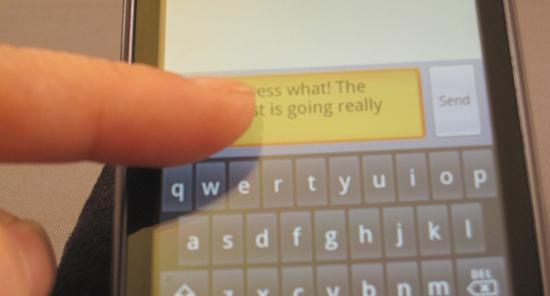
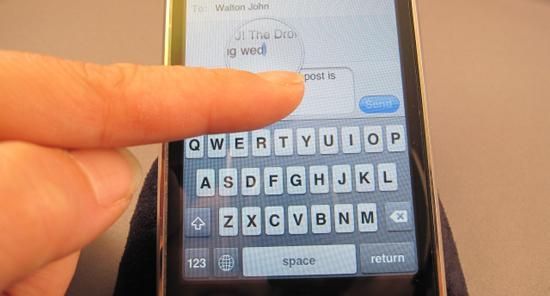
Notifications: I love the way Android handles notifications. It’s elegant and not intrusive, quietly letting you know at the top of the screen if something wants your attention. If you’re ready to look at it, you grab the top bar and pull it down for a list view. The iPhone’s push notifications are good, but they jump out into the middle of the screen, interrupting whatever you’re doing. If you can’t deal with it right now, it goes away completely. And you can’t get it back, or peruse your notifications in a list. In this way, the Droid wins out.
The only other notifier I love more is the WebOS version. Palm Pres and Pixis can actually clear individual notifications right on the home screen. This won’t be a big deal for some people, but if you’re addicted to Twitter, emails, text or other kinds of messaging/status updates, it’s important to figure out which notification style works for you.
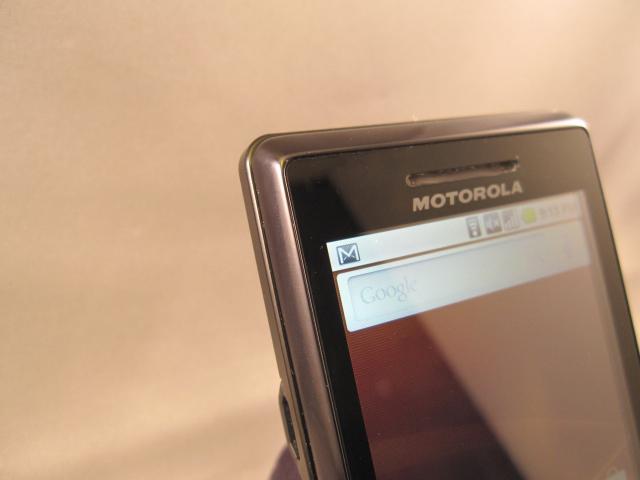
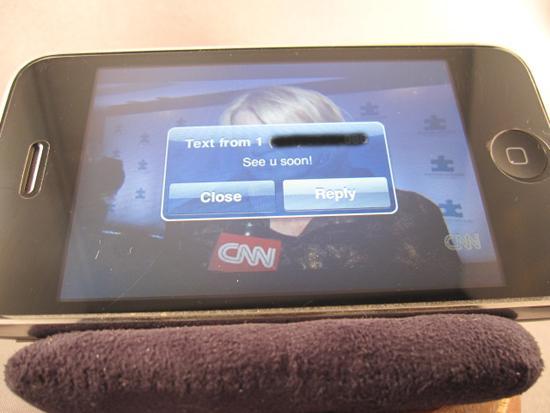
Widgets: This is honestly my favorite part of the Android experience. I’ve become such a widget fiend. If you have a smartphone (whether iPhone, BlackBerry, WinMo or another Android phone), you are already familiar with apps. Widgets are similar, in that they’re downloadable, but they focus on a specific task instead of launching a whole program.
For example, if you want to turn on the iPhone’s Bluetooth, it’s buried a few layers deep into the “Settings” menu. On the Droid, I can use a widget that lets me switch it on straight from the homescreen. Nice! There are all sorts of widgets to control or display things like Wifi, email and calendar, and the different manufacturers tend to sport custom widgets that come with the phone. The Droid comes with a few stock widgets, but there are several more available in the Android Market, so you can customize your own screens.
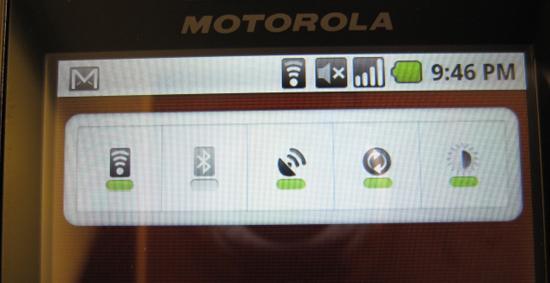
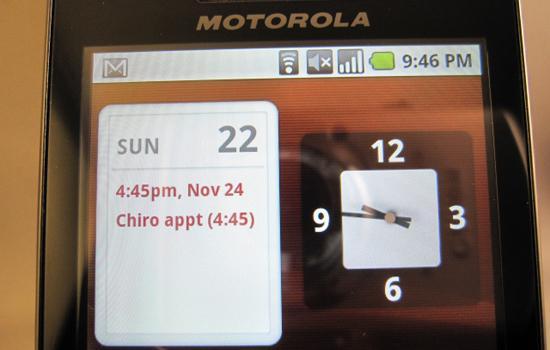
Multitasking: Another stand-out feature (which iPhones don’t offer) is Droid’s ability to multitask. If you’ve ever had to stop a game to look up something, only to see your latest score — and the last two hours of your life — vanish, then you know how important this is. You can run several apps at once, with a menu that pops up if you hit and hold the "Home" button. It lets you toggle as many as the last six apps you used.
Battery Life: As with any phone that multitasks, battery life can be an issue. I didn’t do any scientific tests, but with the Twidroid app, IM client, email and usually a game launched, my power levels were sucked dry kind of fast. But even with all that running, I’d estimate it still had a slightly better life than my iPhone (and unlike my handset, it has a removable battery). But heavy data users (or gamers) might still need to consider a portable charging option. As for talk time, it’s actually pretty good (if I turned everything else off). I had almost 6 cumulated hours of call time.
Wallpapers: If there are any iPhone users in the house, get this: Android users can change their homescreen wallpapers. The feature’s right there, out of the box! There are supplied graphics, as well as a choice of using a photo from the gallery. Sadly for most of us (those who haven't jailbroken, anyway), this alone is a major deal.
Travel-worthiness: I’m going into spec talk for one last important thing (but I’ll keep it short): The Droid doesn’t do dual-mode CDMA/GSM. What does that mean? If you travel abroad, this phone probably won't be your companion. Most of the world uses GSM networks, while Verizon uses CDMA. A dual-mode phone would’ve let you use this at home with Big Red AND take it abroad with you. Since this is CDMA only, this is primarily going to be for domestic use.
FINAL THOUGHTS
Okay, so after all this, I can say that I really, really like the Droid. But… well… I don’t love it. It is definitely a well-made device that has a speedy web browser, gorgeous screen and loads of customization options, along with several features that I only wish my iPhone had. But not only does the boxy shape and weight not work for me, I also have issues with stuff like text correction, media management and picture-taking. (The fact that I can’t take this with me on vacation abroad next year is also a major bummer.)
In short, it excels in some areas, but some major things still have a lot of room for improvement. And as it is, this phone requires a time investment — both to operate on the go and to customize at home.
There’s a lot here for smartphone geeks — with so many settings, features, even home replacement options and other ways to get lost in this device. But ultimately, that may be exactly what ends up keeping it from widespread appeal: All of that can be intimidating for the average consumer. Most people just want a phone that does what it wants, while making it easy to adjust what they need. For these people, I’m just not sure this is the Droid they’re looking for.
Now I could take this moment to wax poetic about my iPhone and its easy user experience, but I’m not going to do that. Instead, I’m going to point to another Android device: The HTC Hero. I am crazy about this device, especially the unlocked European version. (Sprint has a Hero that may look different, but is practically the same under the hood.) It has a user interface called Sense, which makes the screens and operability clean, simple and intuitive. It also offers excellent HTC-custom widgets right out of the box. People make lots of comparisons between Verizon’s Droid Eris (another HTC Android phone with Sense) and the Hero. I haven’t tried Eris for myself yet, so I can’t speak to that, but it may be worth checking out if you’re a newbie Android user on Verizon who is determined to give this platform a go.
So these are my thoughts on the Motorola Droid from Verizon. What are yours? If you have some additional advice or opinions on it, help a fellow reader out by giving it below.
(Click to go back to the Preface, Part 1: The Android OS (in 10 minutes or less) or Part 2: Design Matters
EDITED: Multitasking was edited to correct an inaccuracy. PD reader Literati points out that the Droid will let you multitask with as many apps as memory allows, so the post was edited to reflect that. (Thanks for the correction!) Also, a point of clarification as added in the first paragraph, about this being written with a typical consumer's usability in mind. Much gratitude to mpeters13, since his comments gave me the idea. (Since I can't expect everyone to read the preface, hopefully this helps clarify things.)
******************************************
FINAL NOTE: John Walton's expert Droid review is up, here on PhoneDog! If this "typical consumer"-oriented approach doesn't appeal to you, and you're looking for more hardcore specs and in-depth insights, click here to go there.